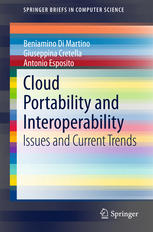

Most ebook files are in PDF format, so you can easily read them using various software such as Foxit Reader or directly on the Google Chrome browser.
Some ebook files are released by publishers in other formats such as .awz, .mobi, .epub, .fb2, etc. You may need to install specific software to read these formats on mobile/PC, such as Calibre.
Please read the tutorial at this link: https://ebookbell.com/faq
We offer FREE conversion to the popular formats you request; however, this may take some time. Therefore, right after payment, please email us, and we will try to provide the service as quickly as possible.
For some exceptional file formats or broken links (if any), please refrain from opening any disputes. Instead, email us first, and we will try to assist within a maximum of 6 hours.
EbookBell Team

4.8
94 reviewsThis book offers readers a quick, comprehensive and up-to-date overview of the most important methodologies, technologies, APIs and standards related to the portability and interoperability of cloud applications and services, illustrated by a number of use cases representing a variety of interoperability and portability scenarios.
The lack of portability and interoperability between cloud platforms at different service levels is the main issue affecting cloud-based services today. The brokering, negotiation, management, monitoring and reconfiguration of cloud resources are challenging tasks for developers and users of cloud applications due to the different business models associated with resource consumption, and to the variety of services and features offered by different cloud providers.
In chapter 1 the concepts of cloud portability and interoperability are introduced, together with the issues and limitations arising when such features are lacking or ignored. Subsequently, chapter 2 provides an overview of the state-of-the-art methodologies and technologies that are currently used or being explored to enable cloud portability and interoperability. Chapter 3 illustrates the main cross-platform cloud APIs and how they can solve interoperability and portability issues. In turn, chapter 4 presents a set of ready-to-use solutions which, either because of their broad-scale use in cloud computing scenarios or because they utilize established or emerging standards, play a fundamental part in providing interoperable and portable solutions. Lastly, chapter 5 presents an overview of emerging standards for cloud Interoperability and portability.
Researchers and developers of cloud-based services will find here a brief survey of the relevant methodologies, APIs and standards, illustrated by case studies and complemented by an extensive reference list for more detailed descriptions of every topic covered.